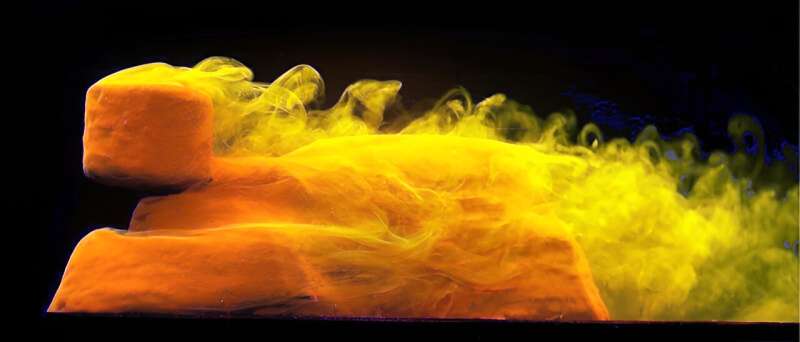November 30, 2023 report
This article has been reviewed according to Science X's editorial process and policies. Editors have highlighted the following attributes while ensuring the content's credibility:
fact-checked
trusted source
proofread
Study suggests nature may have had a hand in shaping Great Sphinx of Giza

A trio of experimental physicists and applied mathematicians at New York University has found evidence that Egypt's Great Sphinx of Giza may have originated as a natural formation. For their study, published in the journal Physical Review Fluids, Samuel Boury, Scott Weady and Leif Ristroph, looked into natural erosion processes and tested the idea that the Sphinx got its start naturally via strong winds.
Anecdotal evidence has shown that strong winds in the desert can, over long periods of time, create shapes out of stone that resemble animals in resting positions. Such formations arise due to the differences in softness and hardness in various parts of a formation. These common formations are called yardangs.
Over the past century, scientists have suggested that similar conditions may have led to the formation of a giant stone that resembled a lion at rest—and that humans then did some carving of their own, resulting in the features that can now be seen on the Great Sphinx of Giza. Such theories have been bolstered by the fact that the Sphinx was made from a single stone, which means it had to have been carved, rather than built, like the pyramids. In this new effort, the researchers tested this idea by attempting to replicate the conditions that might have led to the formation of the initial Sphinx shape.
The work involved placing a clay-enclosed plastic cylinder in a tank filled with water. Flowing water served as a replacement for wind. They found that when they placed the cylinder in just the right part of the chunk of clay, the clay tended to erode into a shape eerily reminiscent of the Sphinx, with elongated paws and all.
Further testing showed that the erosion dynamics resulted from the harder part of the simulated rock (the plastic cylinder) funneling water downward, which led to erosion below. That left the cylinder as the head, towering over a thinning neck, and to some degree, the body. Swirling movements farther down led to the space between what would become the extended legs and paws.
More information: Samuel Boury et al, Sculpting the Sphinx, Physical Review Fluids (2023). DOI: 10.1103/PhysRevFluids.8.110503
© 2023 Science X Network





















